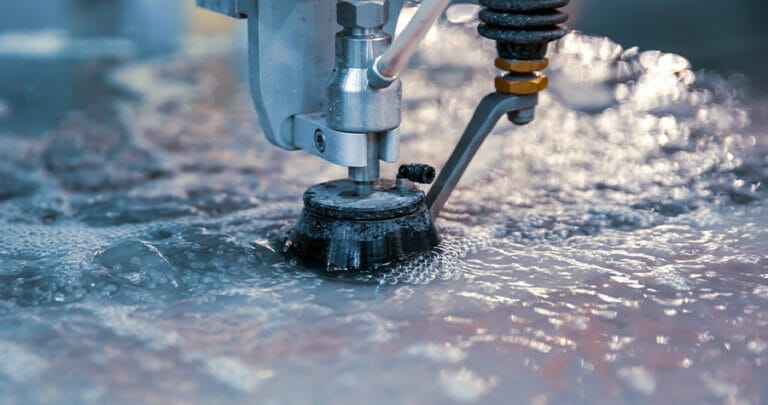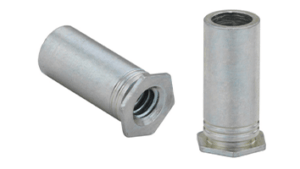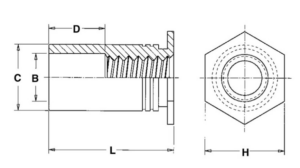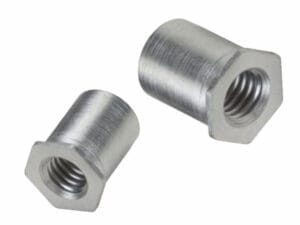Waterjet machining is a CNC 2D manufacturing process which utilizes abrasive media and a high powered waterjet stream to cut through metals, composites, plastics, and more. This precise, efficient machining method increases the edge quality of cut parts, creates accurate internal cuts to your exact specifications, and reduces heat-induced stress on certain materials. We proudly offer waterjet cutting as one of our many high quality machining services. In this comprehensive guide, we will dive deep into the world of waterjet machining, exploring its benefits, the processes behind it, the materials it can cut, and its many applications.
What are the Benefits of Using Waterjet Machining?
Waterjet cutting is a highly versatile and precise machining technology that offers a multitude of benefits across various industries. This cold cutting process helps eliminate the need for additional finishing steps, such as grinding or sanding, saving both time and resources. Waterjet cutting is environmentally friendly, as it uses only water and a small amount of abrasive material, if required, as the cutting medium. This eliminates the production of hazardous fumes or dust often associated with traditional cutting methods, promoting a safer and cleaner working environment.
Waterjet cutting is also highly accurate and capable of achieving intricate and complex designs with tight tolerances, making it ideal for industries like aerospace, automotive, and electronics, where precision is crucial. It also minimizes material wastage, as the narrow kerf width ensures minimal material loss, ultimately reducing costs. Another significant benefit of waterjet cutting is its versatility in accommodating various thicknesses of materials, from thin sheets to thick plates, making it suitable for a wide array of applications.
Our waterjet cutting services here at SendCutSend are capable of cutting your parts quickly and accurately, and at a better price than waterjet parts have been cut at historically. And these are just a few of the major benefits found in waterjet machining. Some other benefits include:
Enhanced edge quality
One of the standout benefits of waterjet machining is the exceptional edge quality it delivers. The process minimizes the formation of heat-affected zones (HAZ), which often occur in traditional cutting methods. This also means that your composite parts are at a lower risk of delamination, which occurs due to increased stresses in the material. As a result, your cut edges remain smooth, free from burrs, and require little to no additional finishing.
Cost savings
Although waterjet cutting is historically one of the more costly 2D machining methods available, we’ve put a lot of time and effort into bringing you quality waterjet cut parts at a fraction of the cost. Our fast, automated processes means you will see savings on every single part you order.
Improved efficiency
Waterjet machining excels in the world of efficiency as it allows for high-speed cutting without compromising accuracy and precision. Because the kerf of a waterjet cutter is relatively small and capable of more precise cuts, waterjet machining minimizes material wastage, contributing to cost and remnant material efficiency as well.
Accurate internal cuts
Waterjet machining is known for its ability to produce accurate internal cuts, even with complex geometry. And because waterjet machining is well-suited for easily cutting through thick metals, it can easily make more complicated cuts and designs even in thicker sheets.
Reduced restraints on material thickness
As we mentioned, waterjet machining can almost effortlessly cut through thick materials, offering versatility and flexibility in your material choices. Because this process does not use heat, the internal stresses on the material are also reduced as compared to other machining processes.
A Look Into the Waterjet Machining Process
Every shop prepares their materials and machines for waterjet cutting differently, each with their own processes that work for them. The steps listed below are generally how waterjet machining works from beginning to end.
Step 1: Material Preparation
The waterjet machining process begins with material preparation. The material to be cut is securely fixed to the cutting table to ensure stability during cutting.
Step 2: Pressurized Water
High-pressure water is then generated using a specialized pump system. This pressurized water is typically mixed with abrasive particles in abrasive waterjet machining, enhancing its cutting capabilities.
Step 3: Nozzle and Focusing Tube
The pressurized water is directed through a nozzle and focusing tube, which narrows the stream into a high-velocity jet. The nozzle’s precise control ensures accuracy in cutting.
Step 4: Cutting
The focused waterjet, or waterjet/abrasive mixture, is directed towards the material, effectively cutting through it. The nozzle’s controlled movement determines the shape and depth of the cut.
Step 5: Quality Check
Once the cutting process is complete, a quality check is performed to ensure that the cut meets the required specifications. Any finishing touches or additional processes are applied if needed.
What Materials Can Be Cut With a Waterjet Cutter?
Here at SendCutSend, we love our laser cutters but waterjet machining is one of the best methods for cutting certain materials like composites. We cut a variety of materials and thicknesses with waterjet machining. Our team of application engineers and machinists will determine whether or not your part is cut with the waterjet based on the complexity of the design, as well as the thickness and type of material. We take all the pressure of choosing off of you! And you can trust that we will make the best choice for your parts and materials.
That being said, it’s valuable for you to know which materials are best suited for waterjet machining so you know what to expect going into the designing phase of your project.
Metal: Waterjet cutting is highly effective for metals of various types, including steel, aluminum, and titanium. Its cold-cutting process eliminates the risk of thermal distortion, making it perfect for heat-sensitive metals. Waterjet cutting is also great at cutting through extreme thicknesses, regardless of the metal.
Plastics: Plastics, such as acrylic, polycarbonate, and PVC, are easily cut with waterjet machining. The absence of heat means minimal risk of melting or warping.
Composites: Composite materials, like carbon fiber and fiberglass, benefit from waterjet cutting due to its precision and minimal delamination. Because there is no heat or blade involved in cutting composites with waterjet machining, there are no harmful dust or particulates created by the machining process, making it better for the environment and for shop working conditions.
We cut three different composites with waterjet machining: carbon fiber, G10/FR-4, and LE phenolic.
Foam and Rubbers: Waterjet cutting excels in cutting foam and rubber materials, ensuring clean edges without compression or deformation.
Glass: Delicate and brittle, glass requires a method that eliminates thermal stress. Waterjet machining achieves this, providing precise glass cutting without cracking or chipping.
Types and Applications of Hydro Cutting
There are several different types of waterjet machining. One uses abrasive media to increase the power behind its cut, and one uses only the stream of water. Here at SendCutSend, we utilize “abrasive waterjet machining” to waterjet cut your parts, meaning our waterjet is supplemented with abrasive media.
Pure Water Jet Machining
Pure water jet machining utilizes high-pressure water jets without abrasive additives. This method is ideal for softer materials like rubber, foam, and plastics. It is particularly suitable for projects involving heat-sensitive materials that cannot withstand heat-producing processes.
Applications: Pure water jet machining finds its application in the aerospace industry, automotive sector, and medical field, where precision and material integrity are paramount.
Abrasive Water-jet Machining
Abrasive waterjet machining involves the introduction of abrasive particles into the water jet, increasing its cutting power for hard materials like metals and ceramics. It is a versatile method suitable for a wide range of materials.
Applications: This method is widely used in industries such as architecture, construction, and manufacturing, where versatility and precision are essential.
Beyond Metal Cutting: Waterjet Cutting Composites with SendCutSend
Our variety of machining processes allows us to cut a huge range of materials and designs, making the best machining process choice to suit your projects. You can help us prepare your parts for machining by following our guidelines and making sure your part fits within all the minimums and maximums we’ve laid out for your chosen materials. For parts using carbon fiber, G10, or LE phenolic, make sure you specifically follow our waterjet cutting guidelines as these materials will be cut with waterjet machining.
Once you’ve confirmed that your parts fit within our guidelines, you’re ready to place your order. Just upload your files and get an instant quote today!







